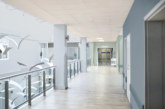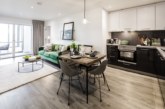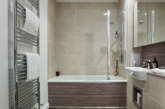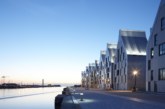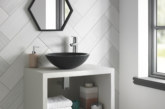
British Ceramic Tile’s Head of Design and Product, Claire O’Brien, looks at the latest trends for interior spaces and surfaces in 2018.
Texture in abundance
Weathered surfaces are a key look for 2018. A look associated with rural retreats and historic buildings, the trend is evolving becoming more modern and industrial as it moves into our homes.
Texture is hugely important. Paint-effects such as ombre and dip-dyes deliver rustic charm while natural stone effects continue to bring renewed textual interest. Brick, stone, faded marble and plaster effects all feature for a trend that brings back an older look.
Shape-creating surfaces
Following on from the structured look seen last year, surfaces are becoming three-dimensional with raised surfaces bringing shadow and depth to interior spaces. Shape and form are important with every small curve and angle an integral part of the overall effect.
Materials are natural and organic with ceramic and porcelain very much in demand. A traditional neutral colour palette has been updated with dove greys and charcoals alongside soft clay and putty shades. As a complete contrast, metals and mirrored effects continue to play a key role within design schemes, bringing opulence and decoration. Strong lines and grids are also a key focus, alongside deep dark shades of matt black to amplify the monochrome trend.
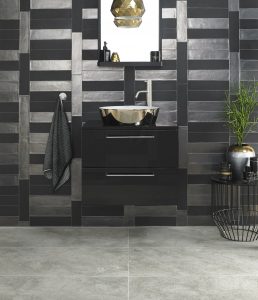
Mirrored-effects and metallics
Reflective surfaces will be in demand in 2018, with mirrored accents and antiqued glass transforming interior spaces. The high shine of glass has been replaced by feminine, shimmering elements. Style directions are taken from the modern deco trend. Glass is teamed with dark woods and burnished metals for a more contrasting look while white walls, blush accents and mottled, rounded surfaces create a softer aesthetic.
Brass is back
Art Deco influences have given rise to a new metallic that is set to take over interiors – brass. A warm, refined metal, brass changes gradually over time to reveal new depths. With its chameleon-like ability to age gracefully, brass will be seen in many different guises from high shine through to textured, hammered effects. While some interiors will adopt accents of brass, others will fully embrace its honey tones.
A warm, adaptable metal, brass is a perfect partner to green. From rich emerald tones through to deep pine green, brass delivers sophistication and is the ideal accent to these luxe green shades.
Industrial evolution
Inspired by a passion for loft living and open spaces, the industrial trend has evolved this year, becoming more refined and stylised combining several design influences into one. Raw, urban design aesthetics have developed this year, with smoother lines and a mixture of materials creating a more sophisticated space.
Interiors remain uncluttered with smooth, polished surfaces such as marble and concrete alongside weathered materials for a reclaimed feel. Dark and light shades of grey, neutral woods and warm metals are combined for a style that offers real depth. Natural light is central to the overall affect, opening up spaces with ease.
Black is back
Black is a design constant, but this year we’re seeing a movement towards matt black. It is sleek and sophisticated with a modern, minimalist interpretation. Clean lines create sharp silhouettes and strong graphical shapes, while large expanses of matt black are bold and daring.
Surfaces adopt the playful nature of pattern with geometric and hexagonal designs delivering visual impact. Expect to see flourishes of high shine alongside matt finishes. A trend that is sleek and contemporary, it can also be made dramatic and glamorous through copper and jade green accents which complement the dark shade. Accessories will feature abstract lines with stark black and white contrasts. Expect to see all white tiled surfaces broken up by strong grout lines in dark shades.

